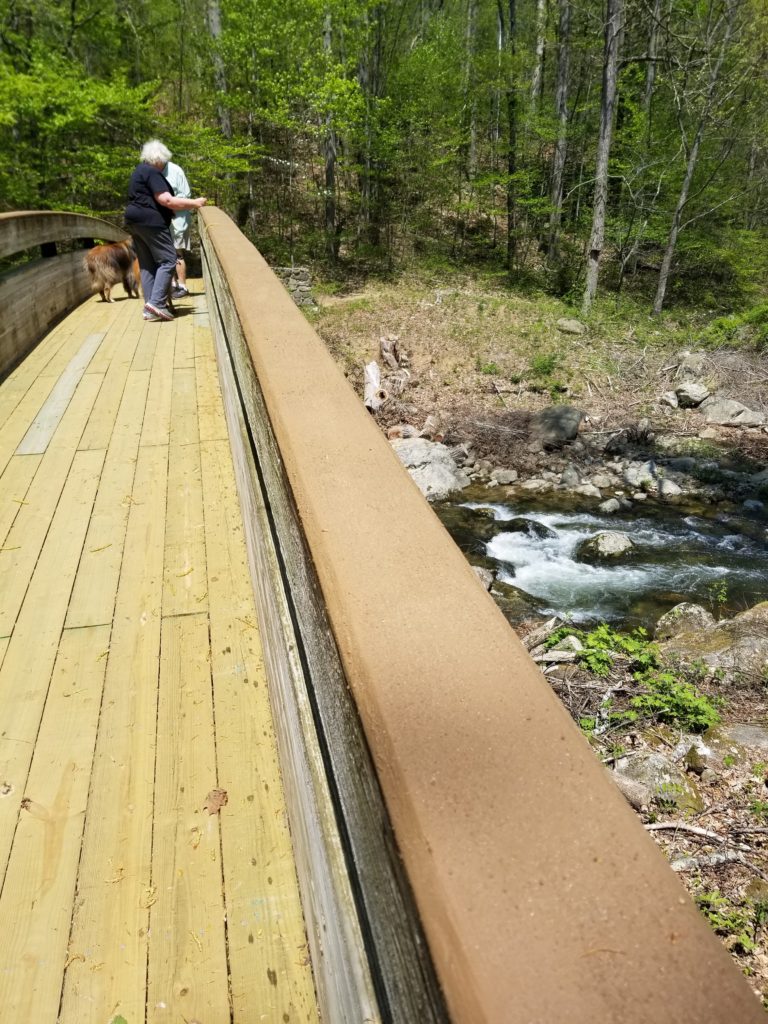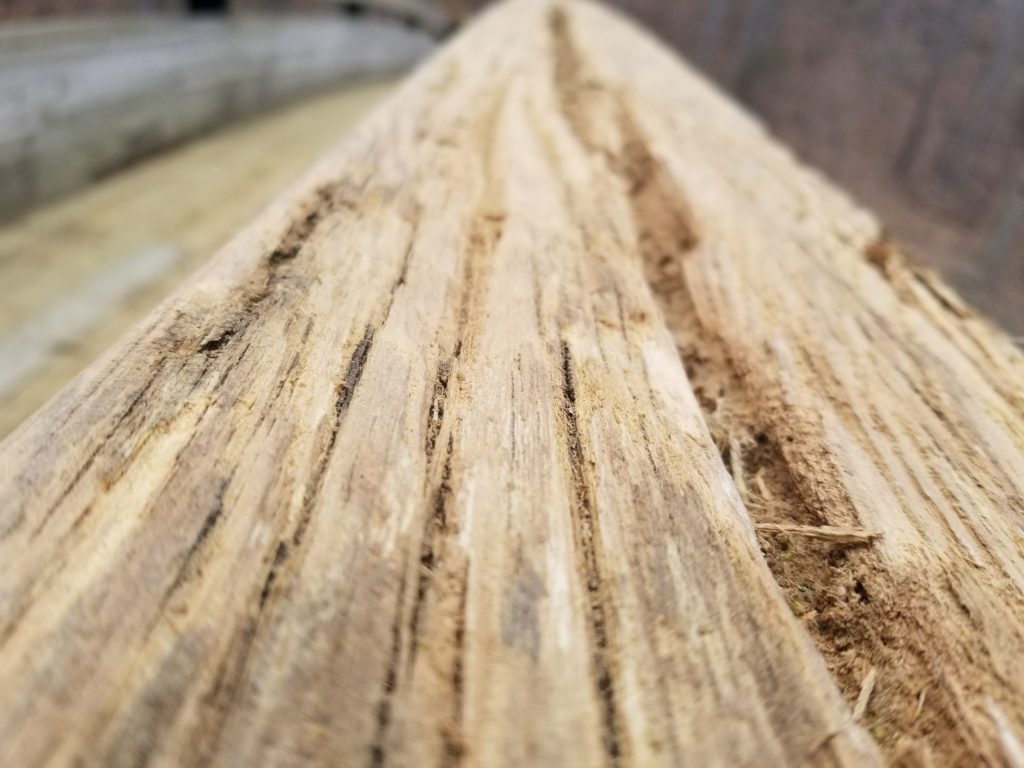Crabtree Falls is close to our hq, and it’s an amazing place. We were lucky enough to do a bridge reconstruction, a cantilevered deck reconstruction, a couple of overlook benches, and some high level trail structure work. Doing a standard singletrack is great and all, and I love hiking on a 2 foot wide tread but the logistics, planning, and design for doing the ludicrous trail engineering work has always been something I’ve gotten into. We had a fantastic time throughout, and I appreciate everything the GW-Jefferson NF does there.

One of the biggest elements was the bridge across the Tye River. It was a 10 foot tall double stringer that spanned 105 feet. From the trailhead it’s amazing to look at, but unfortunately closed. We were super stoked to be able to work on it. It wasn’t our first bridge construction, but it was our largest span that we’d worked on at the time. Both James and I thought for awhile about how to appropriately and safely remove the rotten blocking spans (we called them webs) and replace them. I’m not even sure which one of us came up with the idea of building an entire hanging scaffolding over the side of the main glu-lam. That allowed us to
- prevent treated scrap inflow to the Tye River
- cut the webs in half so they were easily removed
- have a clean working space to put up the new webs
A normal scaffolding would have allowed a significant amount of treated sawdust to get kicked off into the water, but we were able to keep the working platform tight against the bottom of the stringer.
As we put in one web at a time, we’d use our comealong to pull the entire scaffolding along the handrail section. Part of our job was refreshing the entire bridge handrail area, and the top of the handrail was significantly rotted so any damage was incidental.
Here’s the final product below:

Before of the handrail below:

We were able to use a deep rot preservative and filler without sanding away significantly. Took a lot of hours of work on the rail, but end result looked sharp.
I’ll post about the deck and steps here shortly.